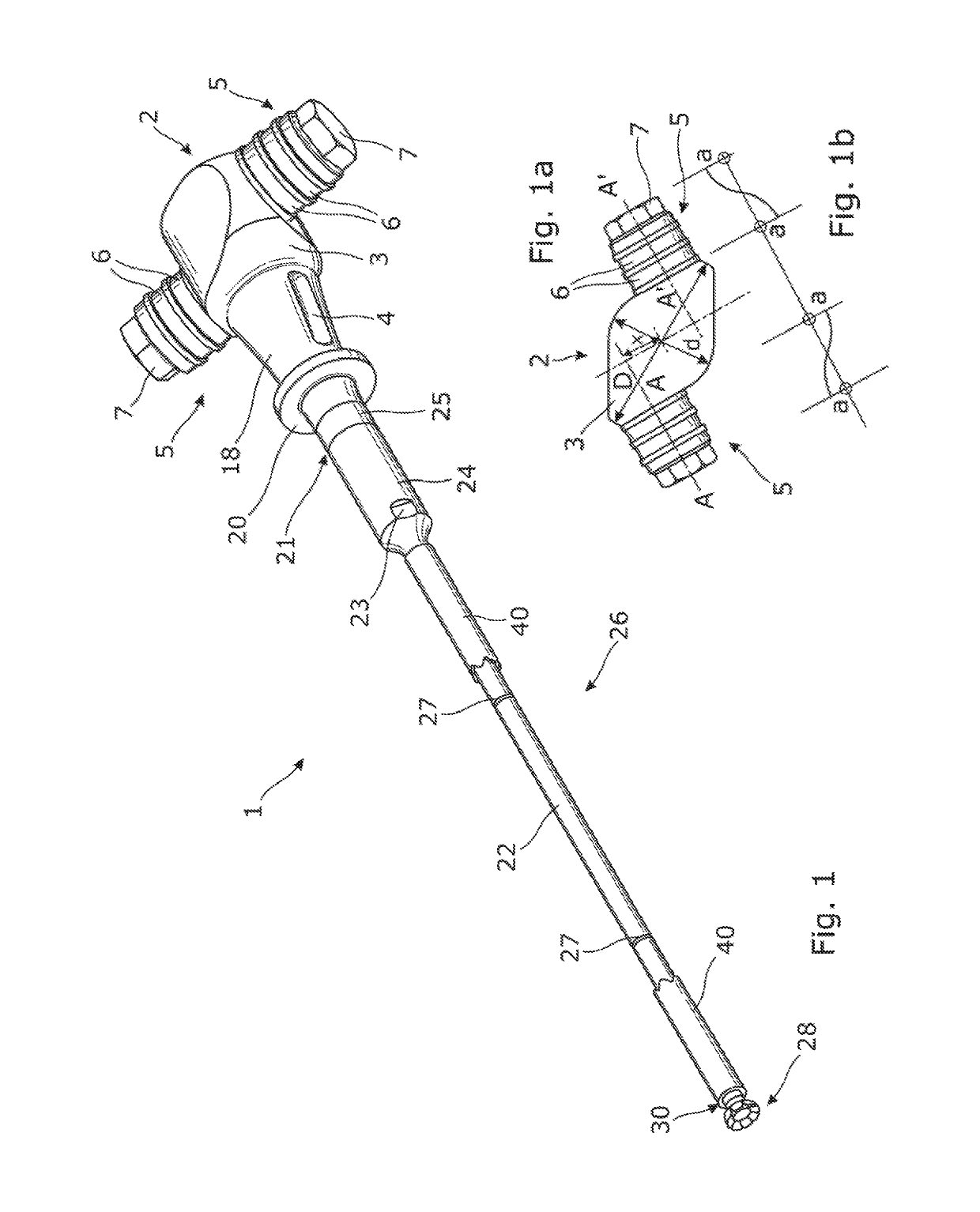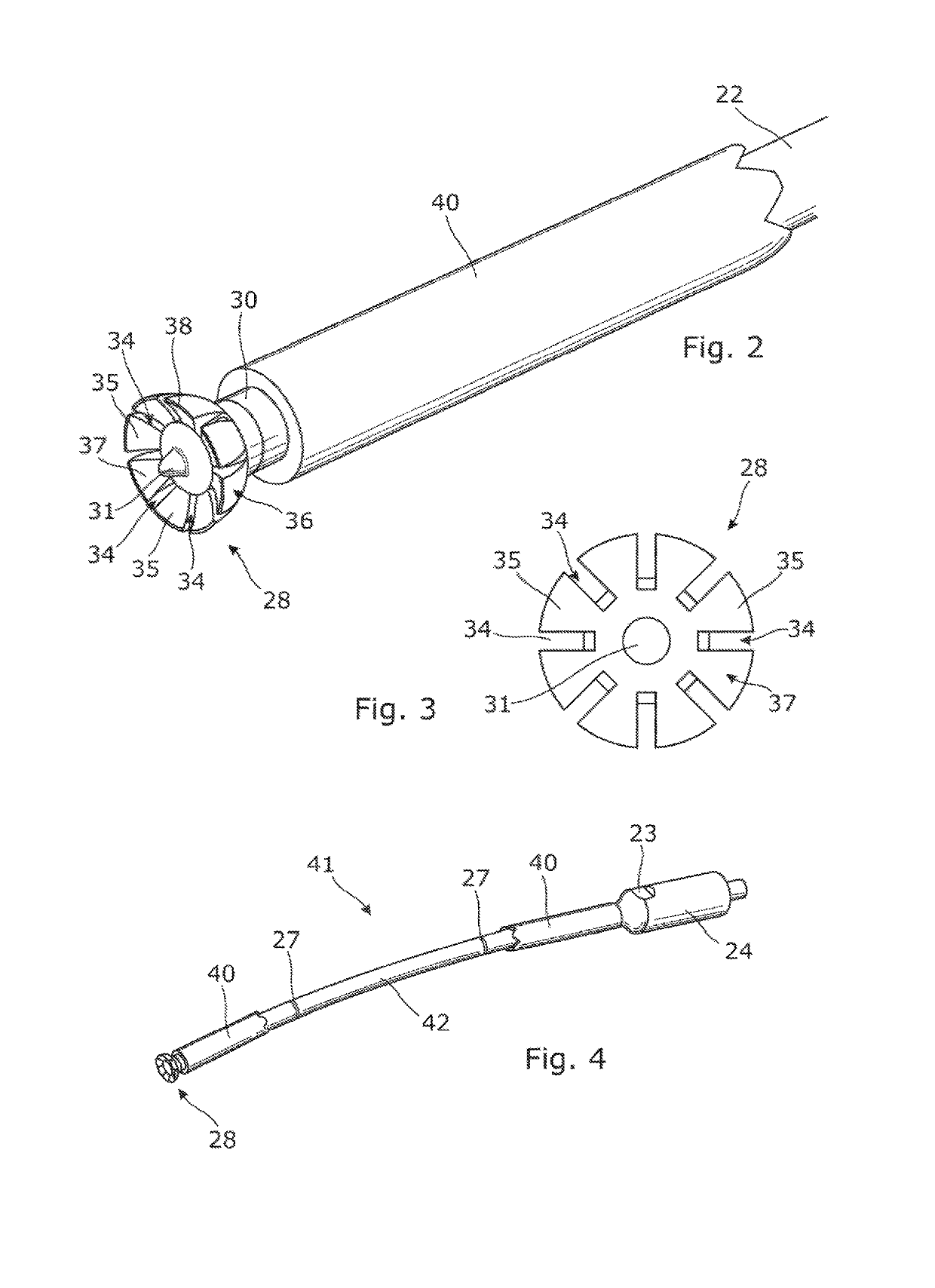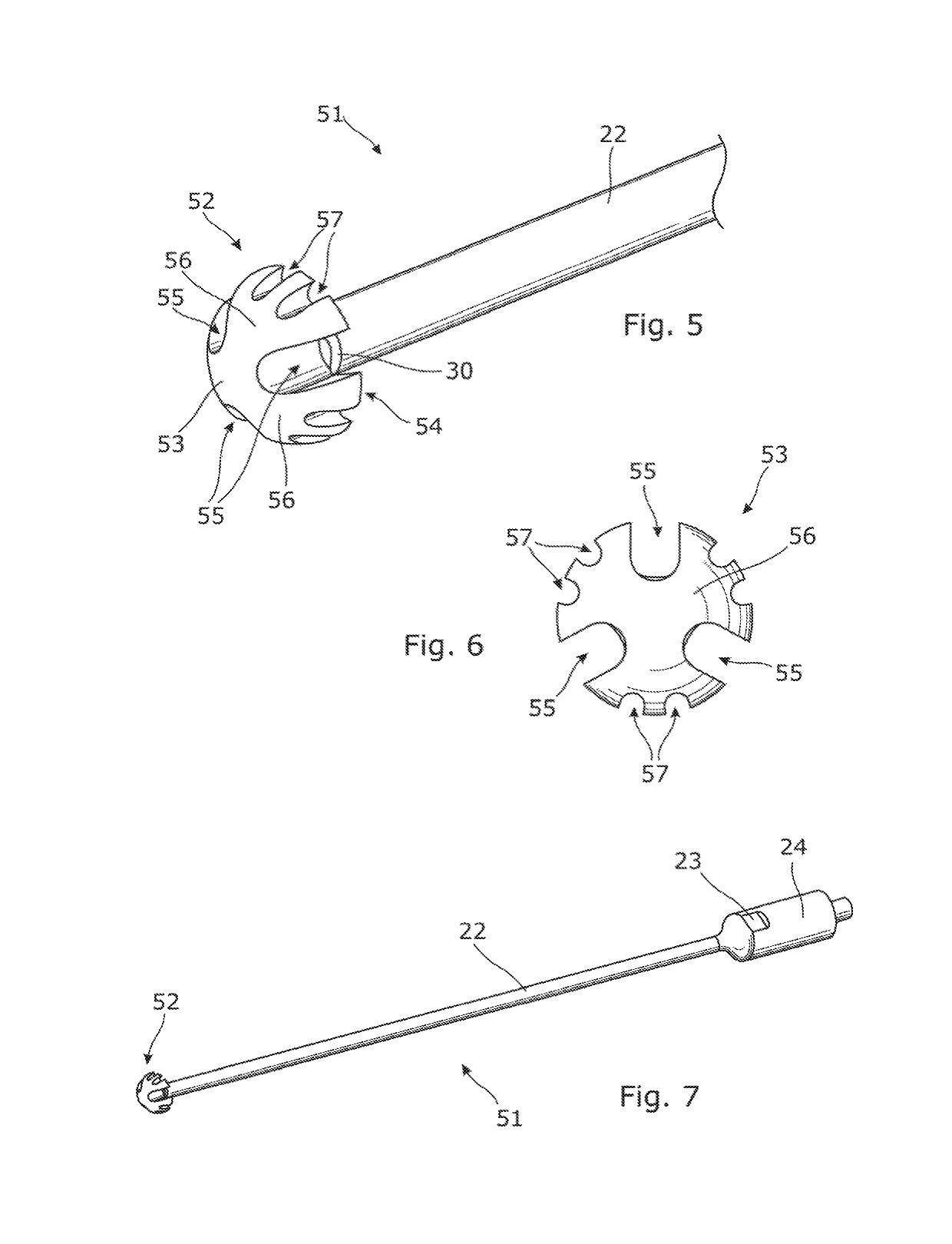Torsional orthopaedic revision system
a technology of orthopaedic revision and torsional articulation, which is applied in the field of improved surgical equipment, can solve the problems of significant accidental damage to adjacent bone of the walls of the femur, difficult removal of an implant secured by ingrowing bone, and long life of the recipient, so as to reduce the distal diameter
- Summary
- Abstract
- Description
- Claims
- Application Information
AI Technical Summary
Benefits of technology
Problems solved by technology
Method used
Image
Examples
Embodiment Construction
[0090]Referring now to the Figures, and to FIG. 1 in particular, a first surgical tool 1 provided with a torsional mode oscillatory system comprises an ultrasonic transducer unit 2, disposed at a proximal end of the tool 1. The transducer unit 2 comprises a torsional converter body 3, to which are mounted a pair of axial-mode ultrasonic transducer stacks 5, each made up of a plurality of axially-polarised piezo-electronic ceramic rings 6, separated by metal electrode rings alternating with the piezo-electric ceramic rings 6 along a central shaft of a threaded bolt 7. The axial-mode ultrasonic transducer stacks 5 are mounted in symmetrical opposition on opposite sides of the torsional converter body 3, at points separated by 180° around its circumference.
[0091]As shown, the axial-mode ultrasonic transducer stacks 5 are each mounted to extend outwards, perpendicularly to a longitudinal axis of the transducer unit 2 and a remainder of the tool 1. However, while a longitudinal axis of e...
PUM
 Login to View More
Login to View More Abstract
Description
Claims
Application Information
 Login to View More
Login to View More - R&D
- Intellectual Property
- Life Sciences
- Materials
- Tech Scout
- Unparalleled Data Quality
- Higher Quality Content
- 60% Fewer Hallucinations
Browse by: Latest US Patents, China's latest patents, Technical Efficacy Thesaurus, Application Domain, Technology Topic, Popular Technical Reports.
© 2025 PatSnap. All rights reserved.Legal|Privacy policy|Modern Slavery Act Transparency Statement|Sitemap|About US| Contact US: help@patsnap.com



